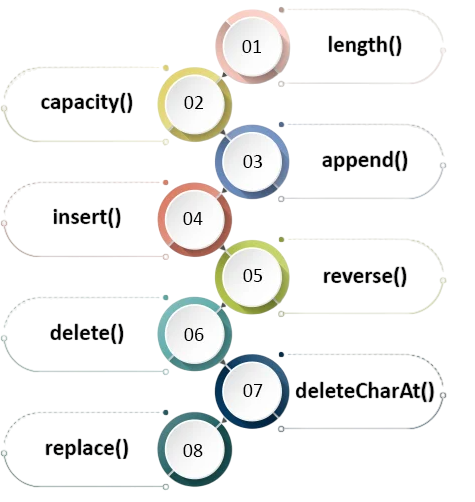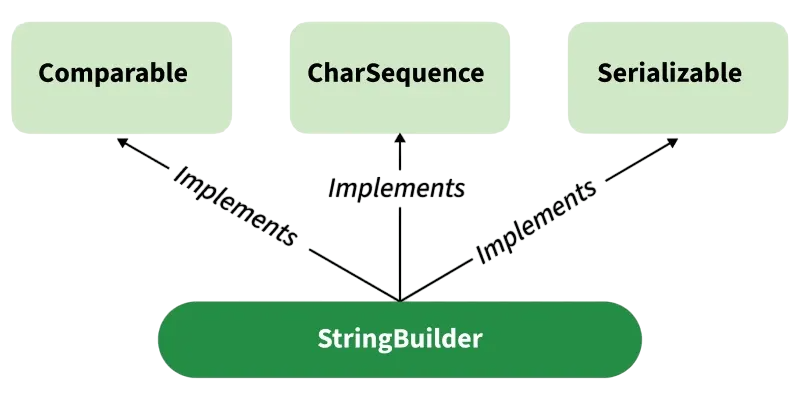
- Introduction to String Handling
- What is StringBuilder?
- Differences: String vs StringBuilder vs StringBuffer
- Common Methods: append(), insert(), delete()
- Performance Comparison
- Method Chaining
- Reversing a String
- Capacity and ensureCapacity()
- Using toString()
- Conclusion
Introduction to String Handling
String manipulation is a fundamental concept in Java, and it plays a critical role in nearly every Java application. Whether you’re working on user input, constructing output messages, building file paths, or forming SQL queries, handling strings efficiently is essential. Java provides multiple classes for handling strings: String, StringBuilder in Java, and StringBuffer. To complement such backend string manipulation with intuitive front-end design, enrolling in Java Training equips you with the skills to build responsive layouts, interactive interfaces, and seamless user experiences that align with robust application logic. Understanding the differences and capabilities of each is crucial for writing optimized and maintainable Java code. String objects are immutable, meaning once a string is created, it cannot be changed. Any modification creates a new object in memory.
To Earn Your Java Training Certification, Gain Insights From Leading Java Developer Experts And Advance Your Career With ACTE’s Java Training Today!
What is StringBuilder?
StringBuilder is a part of the java.lang package and was introduced in Java 1.5 to improve performance in string manipulations. It is designed to be used in single-threaded environments and is more efficient than StringBuffer due to the absence of synchronization overhead. To understand how such performance optimizations fit into broader object-oriented principles, exploring Polymorphism in Oops reveals how different object types can share a common interface while providing distinct implementations, enabling flexible and scalable software design. StringBuilder allows appending, inserting, deleting, and modifying characters within the string. The underlying structure uses a character array that dynamically grows as needed. This provides both flexibility and performance when handling strings with multiple updates.
- StringBuilder sb = new StringBuilder(“Hello”);
- sb.append(” World”);
- System.out.println(sb); // Output: Hello World
In this example, the append() method adds text to the existing string without creating a new object, making the operation faster and memory-efficient.
Differences: String vs StringBuilder vs StringBuffer
Understanding the differences between String, StringBuilder, and StringBuffer helps in choosing the right class for your application needs. To deepen your grasp of how constant values are represented and manipulated in Java, exploring Literals in Java provides essential insights into integer, floating-point, character, string, and boolean literals forming the backbone of reliable and readable code.
| Feature | String | StringBuilder | StringBuffer |
|---|---|---|---|
| Mutability | Immutable | Mutable | Mutable |
| Thread Safety | Yes (by nature) | No | Yes (synchronized) |
| Performance | Slower for concatenation | Faster in single-threaded | Slower due to synchronization |
| Use Case | Read-only text | Frequent updates in single-threaded apps | Multi-threaded environments |
Use String when immutability is required or when working with constants. Use StringBuilder for high-performance single-threaded applications, and StringBuffer when thread safety is a concern.
Would You Like to Know More About Java Training? Sign Up For Our Java Training Now!
Common Methods: append(), insert(), delete()
StringBuilder provides several methods that allow developers to modify the character sequence. Some commonly used methods, which streamline string manipulation. To explore unconventional control flow techniques that complement such string operations, the Java Pattern Programs introduces a rarely used but intriguing way to jump between code segments using labeled destinations and the `goto` module.
- append(String str): Adds the specified string at the end.
- insert(int offset, String str): Inserts the specified string at the given index.
- delete(int start, int end): Removes characters from the start index (inclusive) to the end index (exclusive).
- replace(int start, int end, String str): Replaces a sequence of characters with the specified string.
- reverse(): Reverses the character sequence.

Example:
- StringBuilder sb = new StringBuilder(“Java”);
- sb.append(” Programming”); // Java Programming
- sb.insert(4, ” Language”); // Java Language Programming
- sb.delete(0, 5); // Language Programming
- System.out.println(sb);
These methods offer an intuitive and effective way to manipulate strings.
Performance Comparison
Performance is a critical factor in software development. StringBuilder is designed to be fast, especially in scenarios involving frequent string concatenations, such as building logs, processing file contents, or creating dynamic queries. To complement such backend efficiency with data representation skills, mastering how to Java Frameworks Overview is essential it enables developers to handle low-level operations like bitwise manipulation, memory optimization, and binary formatting with precision.
- // Using String (slow due to immutability)
- String result = “”;
- for (int i = 0; i < 10000; i++) {
- result += i;
- }
- // Using StringBuilder (fast)
- StringBuilder sb = new StringBuilder();
- for (int i = 0; i < 10000; i++) {
- sb.append(i);
- }
In the String version, each concatenation creates a new object, increasing memory usage and garbage collection pressure. The StringBuilder version reuses the same object, improving performance significantly.
Are You Interested in Learning More About Java Training? Sign Up For Our Java Training Today!
Method Chaining
Most StringBuilder methods return the current object (this), enabling method chaining. This technique reduces code length and enhances readability. To complement such backend coding efficiency with polished front-end development, enrolling in Java Training equips you with the skills to build responsive layouts, intuitive interfaces, and visually engaging websites that align with clean, maintainable code practices.
- StringBuilder sb = new StringBuilder();
- sb.append(“Java”).append(” “).append(“is awesome!”);
- System.out.println(sb); // Output: Java is awesome!
Method chaining is common in fluent interfaces and builder design patterns.
Preparing for Java Job Interviews? Have a Look at Our Blog on Java Training Interview Questions and Answers To Ace Your Interview!
Reversing a String
Reversing a string is a common interview question and real-world task. With StringBuilder, it’s straightforward:
- StringBuilder sb = new StringBuilder(“Hello”);
- sb.reverse();
- System.out.println(sb); // Output: olleH
The reverse() method simplifies what would otherwise require manual iteration and character swapping.
Capacity and ensureCapacity()
StringBuilder maintains an internal character array, and it dynamically resizes itself as needed. However, resizing incurs performance costs. To optimize string manipulation while maintaining flexibility in method calls, exploring the Java Web Development Frameworks reveals how defining methods with varying parameters can streamline functionality and reduce redundancy in your codebase.
- StringBuilder sb = new StringBuilder();
- sb.ensureCapacity(100);
- System.out.println(sb.capacity());
This is particularly useful when building large strings where you can estimate the final size.
Using toString()
Once the required manipulations are complete, convert the StringBuilder to a String using toString(). To understand how such method calls are resolved at runtime, exploring Dynamic Method Dispatch in Java reveals how overridden methods are selected based on the actual object type during execution, enabling flexible and polymorphic behavior in object-oriented applications.

- StringBuilder sb = new StringBuilder();
- for (int i = 1; i <= 10; i++) {
- sb.append(i).append(“, “);
- }
- System.out.println(sb); // Output: 1, 2, 3, …, 10
Without StringBuilder, using String concatenation would result in poor performance due to object recreation.
Conclusion
StringBuilder in Java is a vital tool in every Java programmer’s toolkit. It offers a flexible, efficient, and powerful way to manipulate strings without the overhead of immutability. Whether you’re constructing dynamic SQL queries, formatting reports, managing large data streams, or processing text in real-time, StringBuilder in Java provides the performance and reliability needed for robust applications. To complement such backend efficiency with polished front-end development, enrolling in Java Training equips you with the skills to create responsive layouts, intuitive interfaces, and visually engaging websites that seamlessly integrate with high-performance logic. By understanding its methods, performance characteristics, and practical use cases, developers can write more optimized and maintainable code. Practice with real-world exercises ensures that you can apply StringBuilder in Java effectively in projects and interviews alike.





